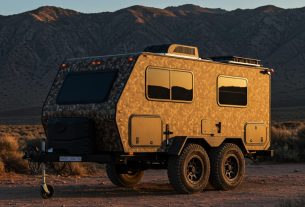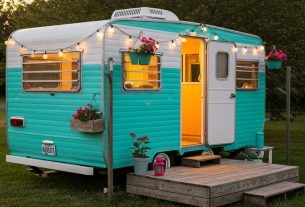When I first began my journey into homeownership, I was inundated with options. One question loomed large in my mind: Should I invest in a prefab home or a modular home? Both terms are often thrown around interchangeably, yet they embody different concepts, advantages, and challenges. In this article, I’ll explore the nuances of prefab and modular homes, diving deep into their pros and cons, and ultimately try to help you make an informed decision.
Understanding the Basics: What Are Prefab and Modular Homes?
Before we delve into the debate, it’s crucial to clarify what prefab and modular homes actually are.
Prefab Homes
Prefab, short for prefabricated homes, is an umbrella term that encompasses various building methods where components of the home are manufactured off-site. These components can include anything from wall panels to entire sections of the house. The key takeaway is that prefab homes are assembled on-site but are pre-manufactured in a factory setting.
Modular Homes
Modular homes are a specific type of prefab home. They are constructed in sections (or modules) in a factory and then transported to the building site, where they are assembled on a permanent foundation. The defining feature of modular homes is that they must adhere to the same building codes as traditional stick-built homes, ensuring quality and safety.
The Pros of Prefab Homes
Now that we’ve defined both types, let’s explore the advantages of prefab homes.
- Cost-Effectiveness: Prefab homes often come with lower price tags compared to traditional homes. This is largely due to streamlined manufacturing processes that reduce labor and material costs.
- Speed of Construction: Because many components are built simultaneously in a factory setting, the time it takes to construct a prefab home is significantly reduced. In some cases, you could be looking at completion in a matter of weeks.
- Customization Options: Many prefab home manufacturers offer a variety of designs and floor plans, allowing you to customize aspects of your home while still benefiting from the efficiencies of factory production.
- Environmental Sustainability: Prefab homes often generate less waste during construction and can utilize sustainable materials, making them a more eco-friendly choice for environmentally conscious buyers.
The Cons of Prefab Homes
While prefab homes have their advantages, they also come with potential downsides that must be considered.
- Financing Challenges: Securing financing for prefab homes can be more complex than for traditional homes, as some lenders may not be familiar with the process or may impose stricter conditions.
- Land Costs: While the homes themselves may be affordable, the cost of land can vary widely. In some areas, finding an affordable plot can be a significant hurdle.
- Limited Resale Value: Depending on location, some prefab homes may not appreciate in value as much as traditional homes, making them a less attractive investment for future resale.
- Code Compliance: Although regulations are improving, not all prefab homes are built to the same standards as traditional homes, which may lead to issues down the line.
The Pros of Modular Homes
Next, let’s examine the advantages of modular homes.
- Quality Assurance: Since modular homes are constructed to meet local building codes, they often boast a higher quality finish than some prefab options.
- Faster Move-In Times: With their speedy construction and assembly process, you can often move into a modular home much more quickly than a traditional home.
- Increased Property Value: Modular homes typically appreciate in value more consistently than prefab homes, which can make them a better long-term investment.
- Flexibility in Design: Modular homes can be customized to a greater extent than traditional homes, allowing for a unique design that reflects your personal style.
The Cons of Modular Homes
However, modular homes are not without their drawbacks. Here are some potential cons to consider:
- Higher Initial Costs: While modular homes can save money in the long run, the initial investment can be higher than that of prefab homes due to their quality and adherence to building codes.
- Limited Availability: Depending on your location, finding a reputable builder or manufacturer who specializes in modular homes might be a challenge.
- Site Preparation Costs: The cost of preparing the site for a modular home—including foundation and utility hookups—can add up quickly.
- Resale Complications: If not properly maintained, modular homes can suffer from stigma and may be viewed as less desirable in certain markets.
Key Differences Between Prefab and Modular Homes
As I navigated the intricacies of my home-buying journey, I discovered some key differences between prefab and modular homes that are essential for potential homeowners to understand.
- Construction Method: Prefab homes include a variety of building methods, while modular homes are a specific type of prefab home that is built in sections.
- Building Codes: Modular homes must comply with local building codes, while some prefab homes may not be subject to the same regulations.
- Financing: Modular homes tend to have more financing options available compared to prefab homes.
- Resale Value: Modular homes typically hold their value better than prefab homes.
Real-Life Case Studies
To further clarify the differences and advantages, let’s examine some real-life case studies that exemplify the benefits and challenges associated with both prefab and modular homes.
Case Study 1: The Eco-Friendly Prefab
A couple in California decided to invest in a prefab home built from sustainable materials. They loved the idea of minimizing waste and creating a lower carbon footprint. Their home was completed in just three months, and although they faced some challenges in securing financing, they ultimately found a lender familiar with prefab constructions. Their home, while initially affordable, has struggled to appreciate in value due to the stigma associated with prefab homes in their neighborhood.
Case Study 2: The Stylish Modular Home
Meanwhile, a family in New York opted for a modular home after being impressed by its quality and adherence to local building codes. They appreciated the wide range of customization options, allowing them to create a home that felt uniquely theirs. The initial costs were higher, but they felt secure in the knowledge that their investment would hold value. After five years, their modular home had appreciated significantly, providing a solid return on investment.
Community Perspectives: What Are People Saying?
As I gathered insights from fellow homebuyers and builders, I noticed varying opinions on the prefab versus modular debate.
- Community Forums: Many individuals praised the affordability and eco-friendliness of prefab homes but expressed concerns about resale value and financing.
- Builder Insights: Builders emphasized the quality and customization of modular homes, often suggesting that the upfront costs are worth the long-term investment.
- Homeowner Experiences: Homeowners who invested in modular homes often highlighted their satisfaction with quality and resale potential, while those in prefab homes noted the joy of affordability but lamented the potential downsides regarding future value.
SEO Best Practices: Optimizing for the Search Engines
As I wrote this article, I employed various SEO techniques to ensure it reaches a wider audience. Here’s a quick overview:
- Keyword Optimization: I included relevant keywords throughout the article, such as “prefab homes,” “modular homes,” and “homeownership,” to enhance searchability.
- Engaging Meta Descriptions: Crafting compelling meta descriptions that summarize the article’s content helps improve click-through rates.
- Internal Linking: Linking to related articles within the site can enhance SEO and keep readers engaged.
- Mobile Optimization: Ensuring that the article is mobile-friendly makes it accessible to a broader audience.
Conclusion: Making Your Decision
As I reflect on the debate between prefab and modular homes, it’s clear that both options have unique advantages and disadvantages. Ultimately, the best choice will depend on your individual circumstances, preferences, and long-term goals.
If affordability and eco-friendliness are your top priorities, a prefab home might be the way to go. On the other hand, if you value quality, customization, and potential for appreciation, a modular home may suit you better. It’s essential to weigh all factors—cost, location, and future resale value—before making such a significant investment.
I encourage you to share your thoughts and experiences regarding prefab and modular homes in the comments below. Have you made a decision yet? Or are you still on the fence? Let’s keep the conversation going!
FAQs
- Are prefab and modular homes the same? No, while all modular homes are prefabricated, not all prefab homes are modular. Modular homes are built in sections and must adhere to local building codes.
- Which is more affordable, prefab or modular homes? Generally, prefab homes are more affordable upfront, but modular homes may offer better long-term value.
- Do banks finance prefab and modular homes? Financing for both types of homes can be more complicated than traditional homes, but modular homes often have more financing options available.
- Are prefab and modular homes eco-friendly? Yes, both options can be built with sustainable materials and methods, offering eco-friendly construction alternatives.
If you found this article helpful, please consider signing up for our newsletter for more valuable insights and updates on homeownership. Don’t forget to share this article with friends and on social media to help others join the debate!
Auto Amazon Links: No products found.

Sign up for our newsletter and stay up to date with exclusive news
that can transform your routine!




